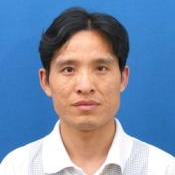State-of-the-Art in Nanomaterials for Energy and Catalysis in China
A special issue of Nanomaterials (ISSN 2079-4991). This special issue belongs to the section "Energy and Catalysis".
Deadline for manuscript submissions: closed (31 December 2021) | Viewed by 27140
Special Issue Editors
Interests: energy storage materials; Li-/Na-/Mg-ion batteries; Li-S batteries; solid electrolytes and batteries; electrocatalysis; metal-air batteries
Interests: triboelectric nanogenerators; supercapacitors; lithium ions batteries and self-powered system
Interests: functional nanomaterials; carbon nanotubes; composites; nanomaterials for energy storage (supercapacitors and lithium batteries); materials characterization
Special Issues, Collections and Topics in MDPI journals
Special Issue Information
Dear Colleagues,
On the way toward a sustainable energy economy, rechargeable lithium-ion batteries (LIBs) and Ni-MH batteries have demonstrated their tremendous success in powering our daily life yet are gradually approaching the limitations on theoretical energy density and resource abundance. In light of the cost and abundance of Li, Na/K/Mg/Zn are considered to be viable alternatives over Li for large-scale energy storage. Besides, electro-/photo-catalysis is also regarded as promising route of eco-friendly and sustainable energy conversion and storage. As many research groups in China have made remarkable advances on these research fields recently, we would like to take this opportunity to gather works with focused and narrowed topics in a Special Issue.
This Special Issue aims to cover research on State-of-the-Art in Nanomaterials for Energy and Catalysis in China especially with following topics.
Prof. Dr. Jun Liu
Prof. Dr. Jie Wang
Prof. Dr. Jipeng Cheng
Guest Editors
Manuscript Submission Information
Manuscripts should be submitted online at www.mdpi.com by registering and logging in to this website. Once you are registered, click here to go to the submission form. Manuscripts can be submitted until the deadline. All submissions that pass pre-check are peer-reviewed. Accepted papers will be published continuously in the journal (as soon as accepted) and will be listed together on the special issue website. Research articles, review articles as well as short communications are invited. For planned papers, a title and short abstract (about 100 words) can be sent to the Editorial Office for announcement on this website.
Submitted manuscripts should not have been published previously, nor be under consideration for publication elsewhere (except conference proceedings papers). All manuscripts are thoroughly refereed through a single-blind peer-review process. A guide for authors and other relevant information for submission of manuscripts is available on the Instructions for Authors page. Nanomaterials is an international peer-reviewed open access semimonthly journal published by MDPI.
Please visit the Instructions for Authors page before submitting a manuscript. The Article Processing Charge (APC) for publication in this open access journal is 2900 CHF (Swiss Francs). Submitted papers should be well formatted and use good English. Authors may use MDPI's English editing service prior to publication or during author revisions.
Keywords
- State-of-the-art LIBs/Ni-MH batteries
- Li-S batteries
- Rechargeable Na/K batteries
- Rechargeable Li metal batteries and solid-state Li metal batteries
- Metal-air batteries
- Supercapacitor
- Solar cell
- Fuel cell
- Hydrogen energy
- Triboelectric nanogenerators
- Mechanical energy harvesting
- Hydrogen Oxidation Reaction (HOR)
- Methanol Oxidation Reaction (MOR)
- Ethanol Oxidation Reaction (EOR)
- Urea Oxidation Reaction (UOR)
- Electro-/Photo-catalysis materials: HER, OER, ORR, CO oxidation, CO2 reduction, etc
- Catalysis mechanism








